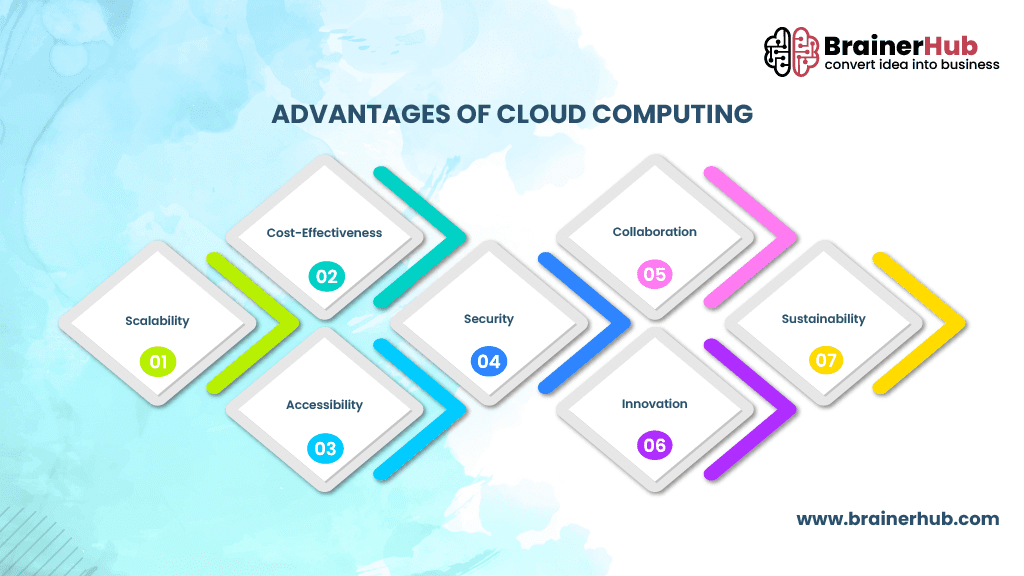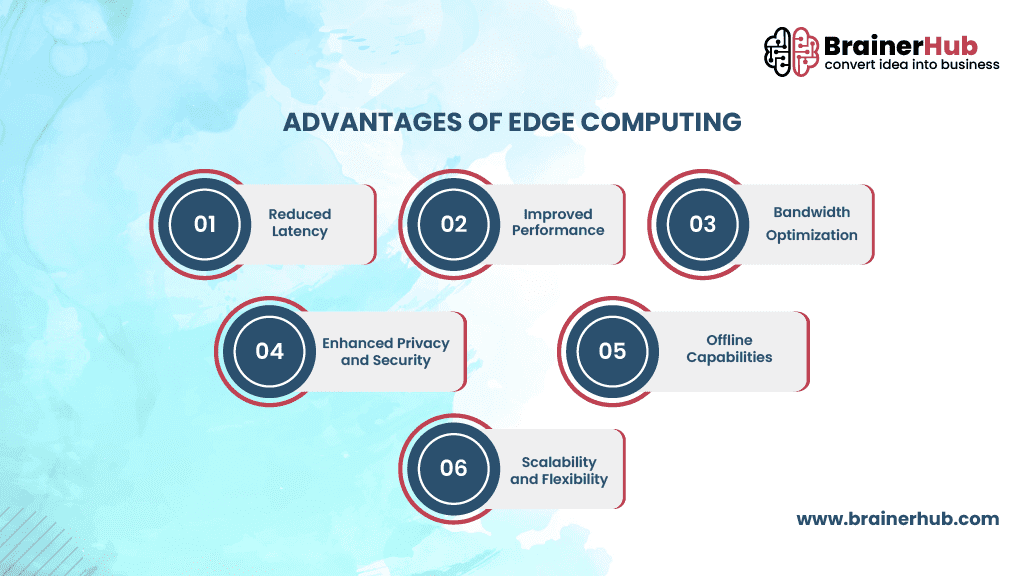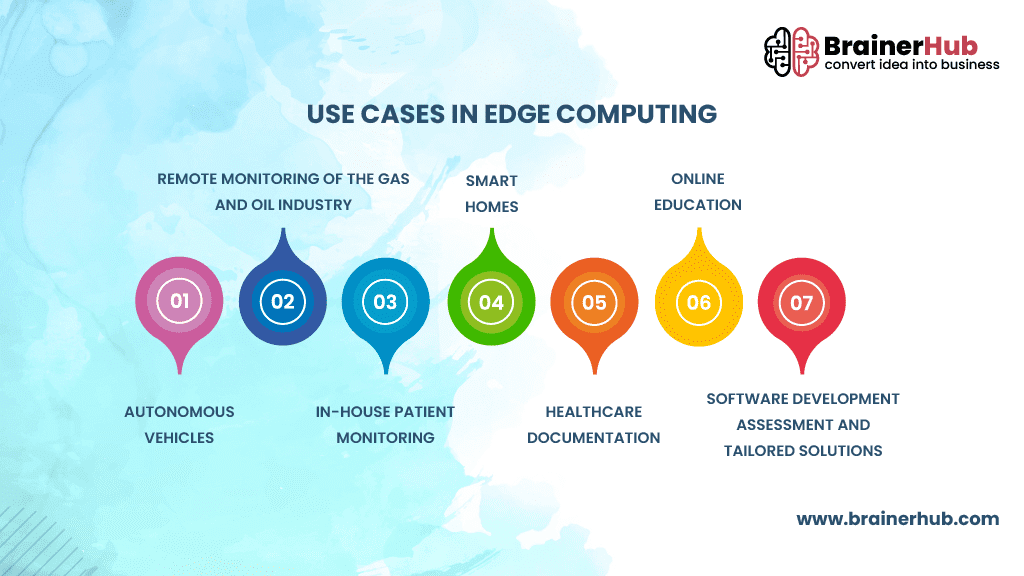People often find themselves in a dilemma as to which one to choose cloud computing or edge computing. The decisions we make about the storage, processing, and management of data in the digital era can have a big impact on the effectiveness as well as agility of our systems. These technologies each offer special characteristics to meet the many demands of today’s applications and services, therefore they are not just different methods but rather complementing aspects of IT infrastructures. there are different trends of cloud computing and edge computing.
How Do Edge Computing and Cloud Computing Work?
Edge computing allows for real-time insights and actions at the network’s edge by bringing processing power closer to the data source. Edge computing reduces latency, improves data privacy, and conserves bandwidth by decentralizing processing and storage resources. This makes it perfect for applications that need rapid response times or that operate in remote or bandwidth-constrained situations.
Cloud computing offers on-demand access to a shared pool of reconfigurable computing resources over the Internet, completely changing how businesses deploy and manage their resources. Cloud computing is cost-effective, scalable, and flexible for digital infrastructures. This technology allows companies to innovate, grow, and adjust according to changing market demands.
Now, let’s discuss in detail the parameters of cloud computing VS edge computing from a business perspective.

Comparison Table: Cloud Computing VS Edge Computing
Comparison Aspects | Cloud Computing | Edge Computing |
Focus | Cloud computing stores and processes large amounts of unstructured data at once. | Edge computing provides real-time data processing and clear communication between devices. |
Real-Time Interaction | Cloud computing does not provide real-time interaction for users. | Edge computing offers real-time interaction with users to achieve accurate results. |
Storage Requirements | Cloud computing provides storage remotely so users can manage accordingly. | Edge computing provides local storage for users. |
Data Distribution | With cloud computing the data is centralized and hence it is stored at a single location. | With edge computing, the data gets distributed in multiple locations. |
Security and Privacy | Cloud computing offers advanced encryption, multi-factor authentication, and data security to ensure confidentiality. | Edge computing provides enhanced data security by processing it locally and reducing the risk of potential exposure to threats. |
Cost -Effective | Cloud computing is more cost-effective as it provides centralization. | Edge computing is not so cost-effective as its resources are at multiple locations. |
Struggling with Your Business's Performance and Complex IT Requirements? Innovate With Right Cloud App Development Partner
Cloud Computing VS Edge Computing: Which is the Better Choice?
When it comes to choosing the right computing method, businesses are often in a dilemma. Working and playing across several platforms and providers is another benefit of edge computing that could help you save costs and performance.
With edge computing, hybrid cloud configuration is feasible due to the open architectural standard that makes this possible. Consequently, there may be communication between your system and the provider’s technology stack. This approach ensures resource compatibility, reduces vendor lock-in, and offers businesses new opportunities.
The pricing structure is yet another difference among edge computing and cloud computing. When a cloud service plan is contracted, a maximum capacity for data transmission, analysis, computing, processing, and storage is agreed upon for an estimated timeframe. For edge computing, it entirely depends on the amount of data that is used and hence wasted time is not reimbursed.
The Hybrid Cloud Architecture: Edge and Cloud Computing
The collaboration of cloud and edge computing is important for many businesses. Whenever possible organizations centralize but if required, they will also disperse. Businesses can benefit from on-remises systems’ security and manageability while also utilizing public cloud resources from a service provider by implementing a hybrid cloud architecture.
There are several ways to integrate edge and cloud computing. Hybrid cloud architecture is quite popular between medium to large-scale businesses as they get best of both worlds that would benefit their business and expand the future. Businesses can strike a compromise between local processing and centralized administration by integrating Edge devices with cloud services. This allows them to optimize resource allocation based on the demands of operational requirements and workload characteristics.
Now let’s talk about the advantages and disadvantages of cloud computing vs edge computing for better understanding.

Advantages of Cloud Computing:
- Businesses can access the data from anywhere as cloud computing is centralized and storage is done at a single location.
- Cloud computing has its own server and hence it delivers high performance and provides client collaboration efficiently to achieve optimum results.
- Cloud computing maintains consistency when it comes to flexibility, reliability, and improving efficiency. This will also reduce overall costs for the users.
- Cloud computing is comparatively cost-effective as it stores data in single location.
- Cloud models come in varying forms that let businesses tailor their IT setup and only pay for the services that are required.
- One of the major advantages of the cloud computing is collaboration which expands the business with different members and provides access to necessary computing resources.
- Cloud computing always provides the latest updates for technology so businesses could benefit from the same.
- Cloud computing provides the opportunity to use data through smartphones devices and tablets increasing mobility without compromising on performance efficiency.
Disadvantages of Cloud Computing:
- Cloud computing can face downtime or slowdown because of cyberattacks, technology glitches, and other potential issues that will impact on overall productivity.
- One of the major disadvantages of cloud computing is internet disruption as it will delay operations.
- Data security and privacy is one of the biggest concerns for any business as it could lead to data breaches, harming reputation, and legal obligation due to limited access.
- Cloud computing is a pay-on-the-go pricing model but it can have hidden charges that can surprise users at the end.
- Cloud computing is centralized and all the data is stored in a single location, hence it can lead to compliance issues as it is governed by multiple legal systems.
Use Cases of Cloud Computing:
- Test and Development
- Backup as a Service (BaaS)
- Infrastructure as a Service (IaaS)
- Platform as a Service (PaaS)
- Software as a Service (SaaS)
- Security
- Serverless Computing

Advantages of Edge Computing:
- Edge computing offers better security by distributing processing, storage, and applications across multiple devices as well as data centers.
- Further, edge computing provides high speed, reduces latency, better reliability, fastens the data processing, and content delivery.
- In edge computing, IoT devices allow businesses to increase their computing capacity and offer cost-effective pricing models.
- As data for edge computing is stored locally, data transmission among connected devices requires minimum time and resources.
- Edge computing provides data privacy and security through protocols to avoid serious breaching situations.
- One of the major benefits of edge computing is assisting in occasional connectivity and limited bandwidth in remote locations.
Disadvantages of Edge Computing:
- One of the disadvantages of edge computing is a limited storage space.
- Edge computing can face challenges when it comes to large volume data.
- Edge computing is not cost-effective and businesses might have additional charges to address.
- Edge computing does not have strong infrastructure that can cause technical challenges while operating.
- Edge computing distributes data in multiple locations hence it is more complex than centralized data processing.
Use Cases in Edge Computing:
- Autonomous Vehicles
- Remote Monitoring of the Gas and Oil industry.
- In-house Patient Monitoring
- Smart Homes
- Healthcare Documentation
- Online Education
- Software Development Assessment and Tailored Solutions

The Future of Cloud Computing VS Edge Computing: A Paradigm Shift
The debate of cloud computing vs edge computing has intensified in the last few years as the technology evolved. Edge computing promises to reduce latency and enhance data processing at the source while emerging as a strong contender against traditional cloud computing. While cloud computing revolutionized data storage and processing, the future belongs to edge computing. With IoT devices and the demand for real-time data analysis, edge computing offers unparalleled efficiency and stability. The synergy between edge and cloud computing will shape the future, offering a hybrid approach that maximizes the strengths of both paradigms.
Wrapping Up the Discussion on Cloud Computing VS Edge Computing:
To conclude the final thoughts, cloud computing and edge computing both play pivotal roles in shaping the future of the IT sector. However, rather than viewing them as competing forces, it’s more fruitful to see cloud and edge computing as complementary technologies. Nowadays, several businesses prefer hybrid cloud model as it combines the strengths of both and offers best of both computing.
Overall, the future of computing lies in synergy rather than comparison debate. By harnessing the power of cloud and edge computing, businesses can unlock new opportunities, drive innovation, and deliver unparalleled user experiences.
Put Your Trust in BrainerHub Solutions for Cloud and Edge computing assistance!

